Deep in the heart of Brittany, France, a cleantech innovator is quietly revolutionizing how we power water treatment. Groupe OKwind has emerged as a key player in sustainable water solutions by masterfully combining solar technology with water treatment processes. Through strategic partnerships with companies like OSMOSUN and Purecontrol, they’re proving that the intersection of renewable energy and water management isn’t just environmentally conscious – it’s economically compelling. For water entrepreneurs and impact investors seeking the next big breakthrough in sustainable infrastructure, OKwind’s journey from regional player to cleantech pioneer offers valuable insights into the future of water treatment technology.
Groupe OKwind is part of my Ultimate Water Investor Database, check it out!
Investor Name: Groupe OKwind
Investor Type: Impact
Latest Fund Size: $ Million
Dry Powder Available: No
Typical Ticket Size: <$250k
Investment Themes: Brackish and seawater desalination, Digital and AI-driven water management, Decentralized treatment & self-consumption
Investment History: $2375000 spent over 2 deals
Often Invests Along:
Already Invested In: Purecontrol
Leads or Follows: Follow
Board Seat Appetite: Rare
Key People: Louis Maurice, Gilles Biedermann, Fabien Billoir, Jérôme Heulot, Valentin Maurice
The Solar-Powered Water Revolution

The intersection of solar energy and water treatment marks a transformative shift in sustainable resource management. At the forefront of this revolution stands Groupe OKwind, whose innovative approach combines photovoltaic technology with water processing systems to create highly efficient, environmentally conscious solutions.
OKwind’s strategic partnership with OSMOSUN exemplifies their commitment to revolutionizing water treatment through solar power. This collaboration has yielded remarkable advances in solar-powered desalination, addressing one of the most energy-intensive processes in water treatment. The technology enables autonomous operation of desalination units using direct solar energy, eliminating the need for battery storage or grid connection.
The system’s innovative design allows for variable production throughout the day, adapting to available solar resources while maintaining optimal performance. This flexibility proves particularly valuable in remote locations and developing regions where conventional power infrastructure may be unreliable or nonexistent. The technology can process seawater and brackish water sources, producing up to 100 cubic meters of fresh water per day while operating solely on solar power.
What sets OKwind’s approach apart is their focus on decentralized solutions. Rather than pursuing massive centralized facilities, they’ve developed modular systems that can be scaled according to local needs. This strategy aligns with the growing trend toward distributed water treatment solutions, making clean water accessible to communities regardless of their size or location.
The environmental impact of this solar-powered revolution extends beyond energy savings. By eliminating the need for conventional power sources, these systems significantly reduce carbon emissions associated with water treatment. Additionally, the technology’s ability to operate without chemical additives in many applications further enhances its environmental credentials.
OKwind’s innovation in solar-powered water treatment represents more than technological advancement – it demonstrates the viable intersection of renewable energy and water security. As water scarcity continues to challenge communities worldwide, their approach offers a sustainable pathway to ensure clean water access while minimizing environmental impact.
The success of these solar-powered solutions has sparked interest across the water sector, encouraging further innovation and investment in sustainable treatment technologies. This momentum suggests that solar-powered water treatment will play an increasingly crucial role in addressing global water challenges, with OKwind’s pioneering work helping to shape the future of water infrastructure.
AI and Digital Innovation in Water Management
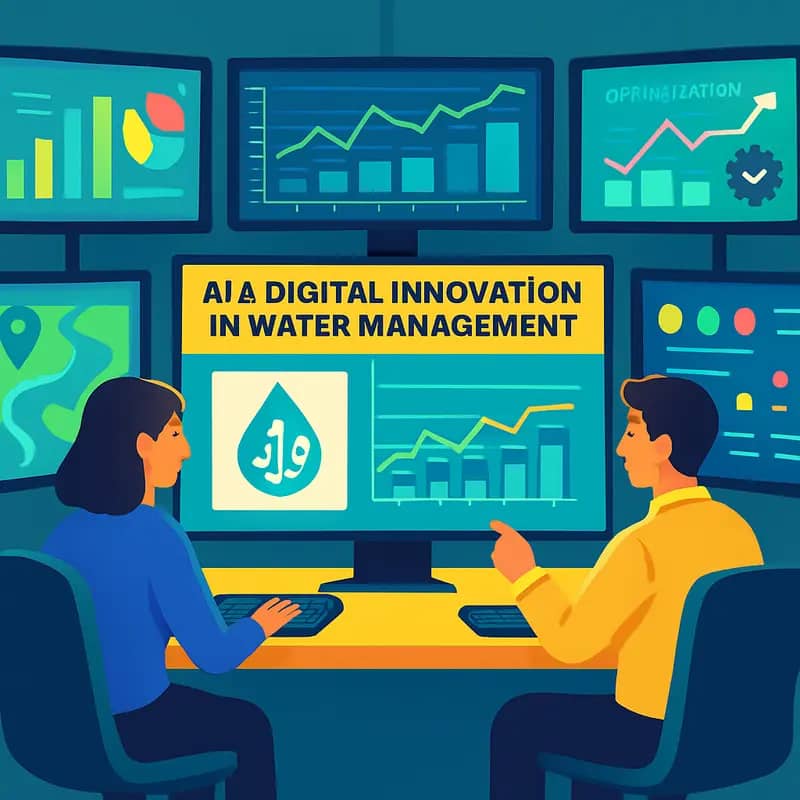
Groupe OKwind’s strategic investment in Purecontrol marks a decisive step toward revolutionizing water treatment operations through artificial intelligence and digital solutions. This partnership exemplifies how cutting-edge AI technology can transform traditional water management approaches into smart, efficient systems.
At the core of this digital transformation lies Purecontrol’s advanced AI engine, which processes vast amounts of operational data from water treatment facilities. The system continuously analyzes parameters such as flow rates, energy consumption, chemical dosing, and water quality metrics to optimize treatment processes in real-time. This automated approach significantly reduces energy consumption while maintaining consistent water quality standards.
The integration of AI-driven controls with OKwind’s solar solutions creates a powerful synergy. The system’s predictive capabilities enable precise matching of energy production with facility demands, maximizing the use of solar power during peak operation hours. This intelligent energy management approach has demonstrated energy cost reductions of up to 30% in pilot installations.
Beyond energy optimization, the AI platform revolutionizes maintenance practices through predictive analytics. By identifying potential equipment failures before they occur, the system helps facilities transition from reactive to preventive maintenance schedules. This shift not only reduces downtime but also extends equipment lifespan and optimizes resource allocation.
Operator empowerment remains a crucial focus of the digital transformation strategy. Rather than replacing human expertise, the AI system serves as a decision support tool, providing operators with actionable insights and recommendations. The platform’s intuitive interface presents complex data in easily digestible formats, enabling operators to make informed decisions quickly.
The implementation of these digital solutions has resulted in measurable improvements across various operational metrics. Treatment plants using the integrated system have reported increased treatment capacity utilization, reduced chemical consumption, and enhanced compliance with regulatory standards. These improvements translate into both environmental benefits and cost savings.
Looking forward, OKwind and Purecontrol continue to refine their AI algorithms through machine learning, incorporating new data patterns and operational scenarios. This ongoing development ensures the system remains adaptive to changing conditions and emerging challenges in water treatment operations. The partnership exemplifies how technological innovation can address critical challenges in water management while advancing sustainability goals.
Decentralized Solutions for Global Impact
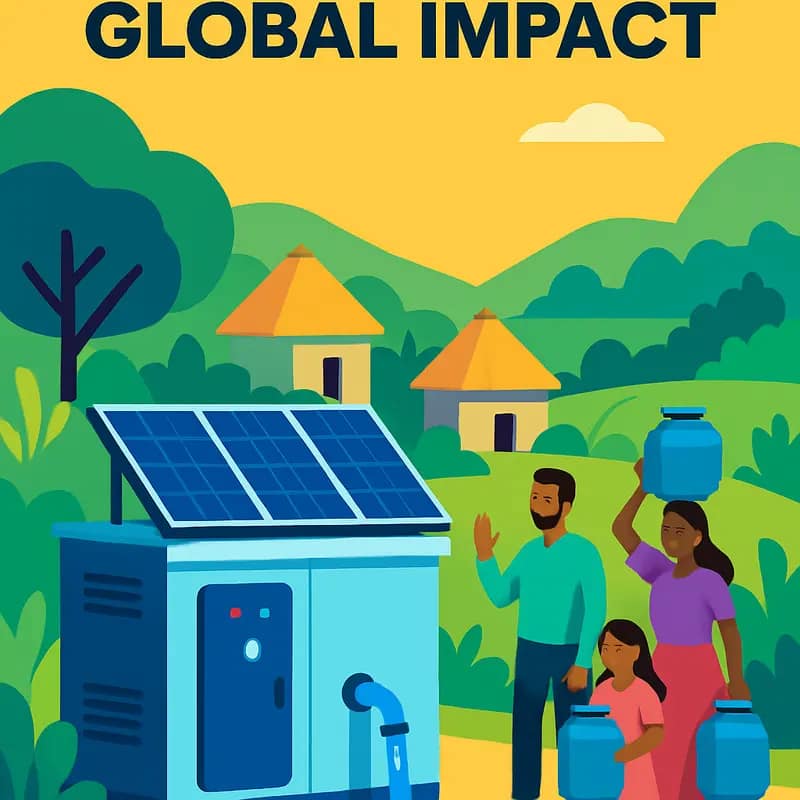
OKwind’s innovative approach to decentralized water treatment represents a fundamental shift in how we address global water challenges. By developing modular solar-powered systems that can operate independently of centralized infrastructure, the company is creating resilient solutions that work even in remote or underserved regions.
At the core of OKwind’s decentralization strategy lies their unique solar tracking technology, which optimizes energy generation to power water treatment processes throughout the day. This self-sufficiency is crucial for areas with unreliable grid connections or no power infrastructure. The systems can adapt to local conditions while maintaining consistent performance levels, making them ideal for diverse geographical deployments.
The company’s decentralized model extends beyond just hardware. Their solutions integrate smart monitoring capabilities that enable remote operation and predictive maintenance, reducing the need for on-site technical expertise. This approach aligns with the growing trend toward distributed water management, where treatment occurs closer to the point of use or discharge.
OKwind has strategically designed their systems with modularity in mind. Treatment units can be scaled up or down based on local needs, and additional capabilities can be added over time. This flexibility allows communities to start with basic treatment requirements and expand as their needs grow or resources become available.
The environmental impact of this decentralized approach is significant. By powering treatment processes with renewable energy, OKwind’s solutions help reduce the carbon footprint of water operations. The local treatment model also minimizes the energy typically required for water transport through extensive pipeline networks.
Rural and peri-urban areas have become prime beneficiaries of OKwind’s decentralized solutions. These locations often lack the population density to justify large infrastructure investments but still require reliable water treatment. The company’s autonomous systems fill this gap effectively, providing professional-grade treatment without the need for extensive infrastructure development.
Collaboration plays a vital role in OKwind’s deployment strategy. By partnering with local organizations and water authorities, they ensure their solutions integrate smoothly with existing water management frameworks while building local capacity for operation and maintenance. This approach creates sustainable long-term implementations that benefit communities while developing local expertise.
The economic advantages of decentralization are becoming increasingly apparent. OKwind’s solutions often prove more cost-effective than traditional centralized infrastructure, particularly when factoring in reduced energy costs and minimal distribution requirements. This economic viability is crucial for widespread adoption, especially in developing regions where resource constraints are significant.
Investment Strategy and Future Growth

OKwind’s strategic approach to financial growth combines prudent investment planning with innovative partnership models to accelerate its expansion in the water technology sector. The company has structured its investment strategy around three core pillars: technological advancement, market penetration, and sustainable scaling.
Central to OKwind’s financial approach is its focus on securing long-term contracts with utilities and industrial clients, creating predictable revenue streams that support ongoing research and development. This steady cash flow enables the company to maintain its technological edge while exploring new applications for its solar solutions in water treatment.
The company has forged strategic partnerships with leading water utilities and engineering firms, leveraging their established networks and expertise to expand market reach. These collaborations extend beyond simple vendor relationships, often involving joint development initiatives that share both risks and rewards. This approach has proven particularly effective in penetrating new geographic markets where local knowledge and relationships are crucial.
OKwind’s growth trajectory reflects a carefully balanced approach between organic expansion and strategic acquisitions. Rather than pursuing rapid scaling at the expense of stability, the company has prioritized sustainable growth, focusing on markets where its solar solutions can deliver the most significant impact on water treatment efficiency and cost reduction.
A distinguishing feature of OKwind’s investment strategy is its commitment to circular economy principles. The company actively reinvests in improving the longevity and recyclability of its solar installations, recognizing that environmental sustainability and economic viability are increasingly interlinked in the water sector. This forward-thinking approach has attracted environmentally conscious investors and partners, further strengthening the company’s market position.
Looking ahead, OKwind has positioned itself to capitalize on the growing demand for energy-efficient water treatment solutions. The company’s robust project pipeline and increasing order backlog suggest strong future growth potential. By maintaining a healthy balance between investment in innovation and market expansion, OKwind continues to build a sustainable foundation for long-term success in the water technology sector.
As highlighted in how to take mid-market green tech companies to the next level, OKwind’s approach exemplifies how cleantech companies can successfully navigate the challenges of scaling while maintaining technological leadership and market relevance.
The Energy-Water Challenge
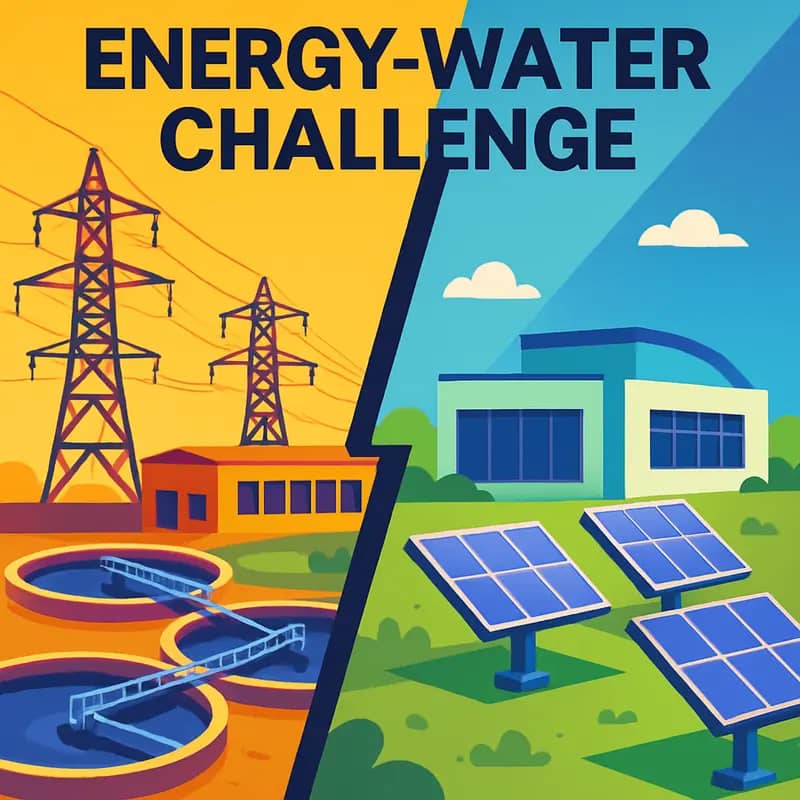
The water sector’s relationship with energy presents a critical paradox that threatens both operational sustainability and environmental goals. Water and wastewater facilities typically rank among the largest energy consumers in municipalities, often accounting for 30-40% of total municipal energy use. This voracious power appetite translates into billions in annual operating costs while generating a massive carbon footprint.
The heart of this challenge lies in the fundamental physics of moving and treating water. Pumping systems require enormous amounts of electricity to transport water through vast networks of pipes, overcome elevation changes, and maintain pressure. Treatment processes like aeration, UV disinfection, and membrane filtration similarly demand constant power input. For wastewater plants specifically, the biological treatment phase accounts for approximately 50% of total facility energy consumption.
Conventional solutions have largely focused on incremental efficiency improvements – installing more efficient pumps, optimizing aeration systems, or upgrading to energy-saving equipment. While valuable, these approaches fail to address the core issue: water infrastructure’s fundamental dependence on grid electricity. This reliance creates multiple vulnerabilities, from exposure to rising energy costs to operational risks during power outages.
The limitations become even more apparent when examining renewable energy adoption in the water sector. Traditional solar installations face space constraints at treatment facilities, while fixed-tilt panels operate at reduced efficiency. Wind power, while promising in theory, often proves impractical due to siting restrictions and intermittency issues.
Meanwhile, the energy burden continues to grow as water quality standards become more stringent, requiring additional treatment steps and more sophisticated equipment. Advanced processes for removing emerging contaminants like PFAS compounds can increase facility energy usage by 20-50%. Climate change further exacerbates the challenge, as more extreme weather events force plants to handle larger flow variations and higher pollutant loads.
As highlighted in a recent analysis of water sustainability challenges, the water-energy nexus represents a critical barrier to achieving both operational efficiency and environmental goals. The sector urgently needs solutions that can fundamentally reshape this relationship rather than merely optimize existing energy-intensive approaches.
OKwind’s Solar Tracking Innovation
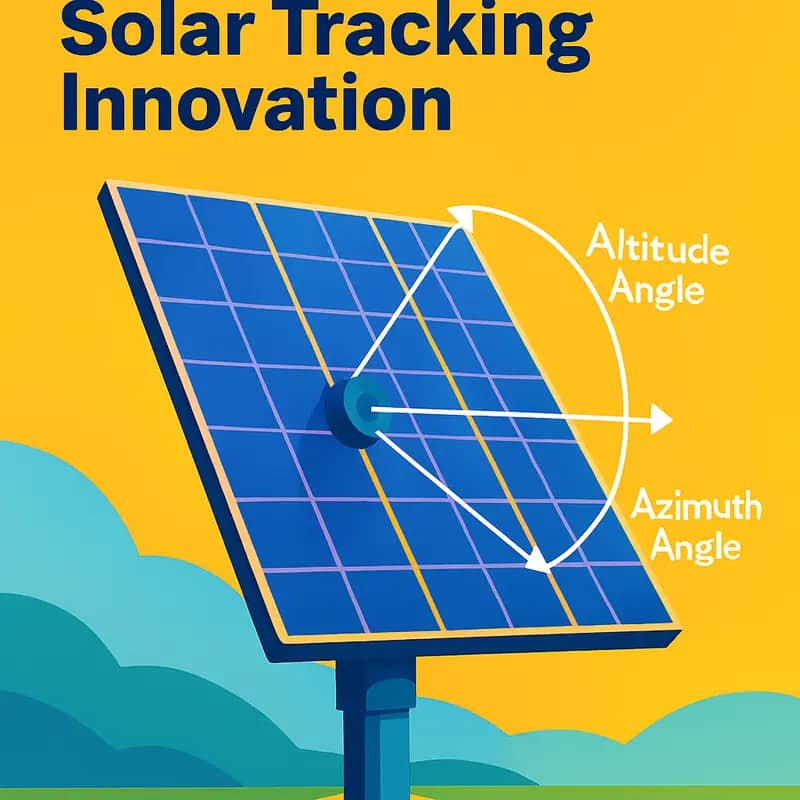
At the heart of OKwind’s revolutionary approach to powering water operations lies their sophisticated dual-axis solar tracking system. This engineering marvel represents a significant leap forward in solar energy optimization, particularly for water treatment facilities seeking to maximize their renewable energy generation.
The dual-axis tracking system employs a proprietary algorithm that continuously adjusts solar panels along both horizontal and vertical axes throughout the day. This dynamic positioning enables the panels to maintain an optimal 90-degree angle with the sun’s rays from dawn to dusk, capturing up to 40% more energy than traditional fixed solar installations.
What sets OKwind’s tracking technology apart is its predictive learning capabilities. The system’s algorithms analyze historical weather patterns, real-time atmospheric conditions, and facility energy consumption data to optimize panel positioning. This intelligent forecasting helps water treatment plants better match their energy generation with peak demand periods, reducing reliance on grid power during costly peak hours.
The tracking mechanism itself operates with remarkable precision while maintaining robust durability. Each tracking unit functions independently, allowing for granular optimization across large solar arrays. The decentralized design also ensures that mechanical issues in one unit don’t compromise the entire system’s performance – a critical reliability feature for water operations that cannot afford downtime.
OKwind’s engineering team has paid particular attention to the unique requirements of water treatment facilities. The tracking system’s motors and mechanical components are sealed against moisture and chemical exposure, while the control systems are hardened against electromagnetic interference from pumps and other treatment equipment. This water-industry-specific engineering has proven particularly valuable in helping utilities achieve their sustainability goals while maintaining operational reliability.
Perhaps most impressively, OKwind’s tracking innovation integrates seamlessly with existing SCADA systems, allowing operators to monitor and optimize solar performance alongside other plant processes. This integration enables sophisticated load balancing between solar generation and critical water treatment operations, ensuring stable power supply even as weather conditions and treatment demands fluctuate throughout the day.
The system’s modular architecture also facilitates easy scaling as facilities expand or energy needs grow. Additional tracking units can be added to the network without disrupting existing operations, providing water utilities with a flexible pathway to incrementally increase their renewable energy capacity.
Economic Impact & ROI
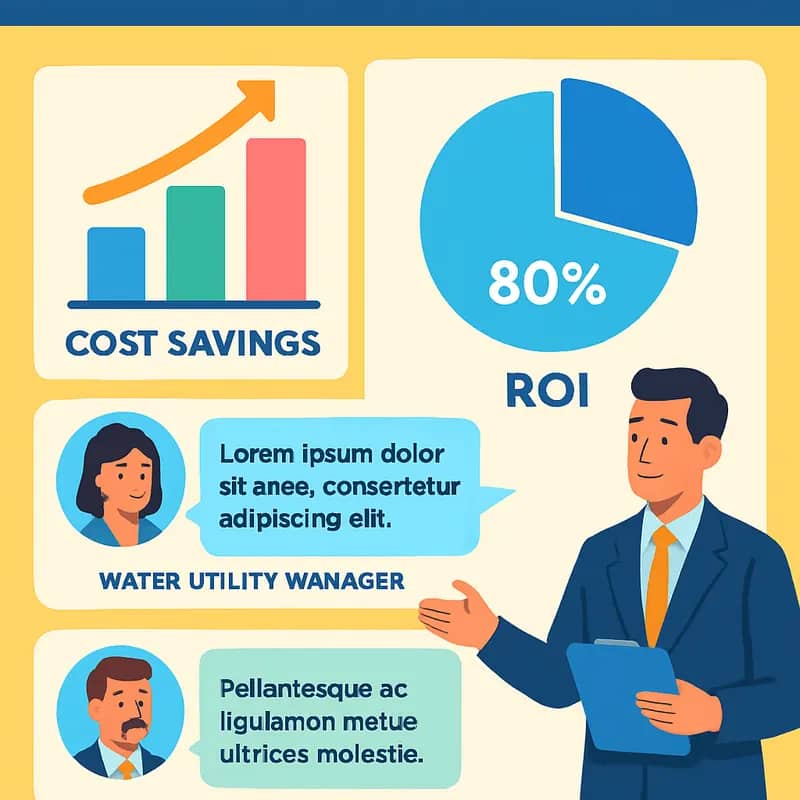
The economic case for OKwind’s solar tracking solutions in water treatment operations presents compelling evidence for utilities seeking to reduce operational costs while advancing sustainability goals. Analysis of multiple deployments reveals consistent patterns of substantial returns on investment, typically achieving payback periods between 4 to 6 years.
A standout case study from a mid-sized water treatment facility in southern France demonstrated a 42% reduction in energy costs within the first year of implementation. The facility, processing 15 million gallons daily, previously faced annual energy expenses exceeding €800,000. After installing OKwind’s dual-axis tracking system, their energy consumption from the grid dropped by 65%, translating to annual savings of approximately €336,000.
The ROI calculations become even more attractive when factoring in government incentives and carbon credits. How to ensure energy and carbon resilient projects with a simple screening tool Several utilities have reported accelerated payback periods of less than 3 years by leveraging available subsidies and environmental credits.
Beyond direct energy savings, the economic benefits extend to operational resilience. Water utilities using OKwind’s solution report reduced vulnerability to grid price fluctuations and power outages. One facility estimated avoided costs of €50,000 annually from prevented operational disruptions, adding another layer to the investment case.
Maintenance costs remain remarkably low, with annual maintenance expenses averaging less than 1% of the initial capital investment. The systems’ robust design and advanced monitoring capabilities enable predictive maintenance, preventing costly emergency repairs and extending equipment lifespan.
The scalability of the solution provides additional economic advantages. Utilities can start with a pilot installation and expand incrementally as they validate the returns. This approach allows for optimal sizing based on actual performance data rather than theoretical projections, reducing investment risk and improving overall returns.
Long-term economic modeling suggests cumulative savings of 2.5 to 3 times the initial investment over a 15-year period, accounting for equipment degradation and maintenance costs. This projection excludes potential upside from rising energy costs or additional carbon pricing mechanisms, which would further improve the economic benefits.
For water utilities committed to renewable energy targets, OKwind’s solution offers a unique proposition: achieving sustainability goals while generating positive financial returns. This alignment of environmental and economic objectives has proven particularly compelling for publicly owned utilities facing both budget constraints and emission reduction mandates.
Future Growth & Investment Opportunity

OKwind stands at the cusp of significant market expansion, backed by compelling competitive advantages in the water-energy nexus. The company’s innovative solar tracking technology, combined with its specialized focus on water utilities, positions it uniquely to capture growing demand for sustainable water treatment solutions.
The addressable market presents substantial room for growth. With water utilities globally spending over $14 billion annually on energy costs and facing mounting pressure to decarbonize operations, OKwind’s solution addresses a critical pain point. Early success in the French market has validated the technology’s effectiveness, creating a strong foundation for international expansion.
OKwind’s competitive moat stems from several key factors. Their proprietary tracking system optimizes solar energy capture while minimizing maintenance requirements – a crucial consideration for water utilities. The company’s deep understanding of water treatment processes allows them to seamlessly integrate their solution into existing infrastructure. Additionally, their track record of successful deployments provides valuable data and operational insights that create barriers to entry for potential competitors.
For impact-focused investors, OKwind presents a compelling investment thesis that aligns financial returns with environmental benefits. The company’s technology directly addresses multiple UN Sustainable Development Goals, including clean water and sanitation (SDG 6), affordable and clean energy (SDG 7), and climate action (SDG 13). This multi-impact approach enhances the company’s attractiveness to ESG-focused funds and impact investors.
The company’s growth strategy focuses on three key pillars: geographic expansion, product innovation, and market penetration. By targeting regions with high solar potential and significant water treatment needs, OKwind can efficiently scale its operations. The development of new features and capabilities ensures the solution stays ahead of evolving customer needs.
While the company faces typical scaling challenges, including supply chain optimization and talent acquisition, its asset-light business model supports efficient capital deployment. The water-as-a-service approach reduces barriers to adoption while creating predictable recurring revenue streams.
Significantly, OKwind’s technology platform enables future expansion into adjacent markets, including industrial water treatment and agricultural applications. This scalability, combined with strong unit economics and growing market demand, positions the company attractively for both strategic investors and sustainability-focused funds seeking proven solutions with demonstrable impact.
Final words
Groupe OKwind’s journey represents more than just another cleantech success story – it demonstrates the vital intersection of renewable energy and water treatment technology. Through their innovative solar solutions and strategic partnerships, they’ve created a blueprint for sustainable water infrastructure that addresses both environmental and economic concerns. For water entrepreneurs, OKwind’s model offers valuable lessons in combining technological innovation with practical application. Their success in developing decentralized, AI-enhanced water treatment solutions powered by renewable energy shows how the water industry can embrace sustainability without sacrificing efficiency or profitability. For impact investors, OKwind’s growth trajectory and strategic focus on key partnerships highlight the immense potential in the water-energy nexus. As water scarcity and energy costs continue to challenge communities worldwide, companies that can effectively bridge these sectors will become increasingly valuable. OKwind’s approach to innovation, coupled with their commitment to practical, scalable solutions, positions them as a compelling example of how technology can address global water challenges while creating sustainable business opportunities.
Wanna explore the Full List of Water Investors that cut at least two checks over the past decade? Check it out and bookmark it, I update it regularly!
Learn more: https://dww.show/the-ultimate-water-investor-database/
About us
Through my “(don’t) Waste Water” platform, I offer unique and insightful coverage of the water industry that combines technical expertise with engaging storytelling. If you haven’t yet, it might be time for you to subscribe to the podcast, the youtube channel and/or the newsletter!
